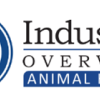Recent Posts
- Cultivating A Champion Culture: Balancing Performance and People in Animal Health
- How Stable are Earnings in Animal Health? Results of the Animal Health Jobs 2025 Salary Survey
- Entry Fees for the Race for Talent: Results of the Animal Health Jobs 2025 Salary Survey
- Looking In The Gift Horse’s Mouth: The Pros and Cons of Counteroffers in Animal Health
- Beyond the Hire: Why Animal Health Needs More "Relationshipping," and Less Recruiting
Most Popular
-

Entry Fees for the Race for Talent: Results of the Animal Health Jobs 2025 Salary Survey
-

News to Know from Brakke Consulting’s 2025 Animal Health Industry Overview
-

How Stable are Earnings in Animal Health? Results of the Animal Health Jobs 2025 Salary Survey
-

Different Kettles of Fish: Results of the Animal Health Jobs Spring 2023 Attitudinal Survey
-

How Will Artificial Intelligence Change Jobs In Animal Health?
Entry Fees for the Race for Talent: Results of the Animal Health Jobs 2025 Salary Survey

Executive Summary
In this year’s Animal Health Jobs salary survey, current animal health industry employees share details about their financial compensation, benefits, and hybrid work arrangements. This report describes employee and candidate expectations that hiring managers must meet to craft competitive offers for top talent. It also compares current results to those of the 2021 Salary Survey, revealing overall stability in the animal health industry.
Respondents, all employed in the animal health industry at the time of the survey, represent various levels and functions: from entry level to senior executive, and spanning commercial, medical, financial, and administrative roles in both clinical practice and industry. Sales professionals, whether field- or office-based, form the largest respondent group.
Veterinarians and veterinary technicians who transition to industry often find that their skills command compensation far exceeding what they can earn in clinical practice. The mean compensation for all full-time employees in this year’s survey is $116,000; sales professionals earn a mean salary of $121,000. Annual salary increases are common, and benefits in corporate jobs are typically more generous than in practice. Hybrid work options are now essential for animal health professionals in industry, with 80% of respondents reporting that they work remotely at least part of the time.
Employers looking to attract the most skilled and motivated employees must make competitive offers encompassing cash compensation and non-cash benefits. This survey’s results highlight the key factors for creating such offers.
Introduction
Animal health companies expecting to attract the best candidates must meet those candidates’ expectations for compensation. The 2025 Animal Health Jobs talent marketplace’s compensation survey analyzes current trends in these areas within the animal health sector and serves as a crucial resource for companies and candidates looking for up-to-date benchmarks.
The survey was conducted in February and March 2025 among members of the Animal Health Jobs database of animal health professionals, subscribers to the Brakke Consulting newsletter and LinkedIn members within the extensive Brakke Consulting/Animal Health Jobs network. Basic statistical calculations of the results were conducted using T-tests for means and Z-tests for percentages; statistical significance for all analyses was set at 90% (p>0.1).
Demographics: Duck, duck, goose
In general, the demographic profiles of respondents are consistent with the 2021 survey, indicating the stability of the Animal Health Jobs network in terms of location, years of experience and breadth of roles.
Geography and employment status
Although the respondent population is slightly skewed to the southern states (40%), the balance comes from across the United States: 22% from the West, 18% from the Midwest and 20% from the Northeast. The majority (82%) work for an animal health industry company, while 18% work in veterinary clinics in medical or non-medical roles.
All respondents were employed at the time they completed the survey, with 93% working full-time. Although recent publications indicate that 61% of veterinarians are interested in reducing their clinical work hours, 83% of responding veterinarians working in clinics were full-time employees. 1
Animal health experience
As readers of Animal Health Jobs surveys know, our survey participants possess significant experience in animal health. This year’s respondents have spent a mean of 17 years in the industry, with experience ranging from fewer than 4 years (8.3%) to more than 30 years (14.6%). A plurality (41.5%) has between 7 and 20 years of experience (Fig. 1). These mid-career experts are the backbone of the animal health industry.
Breadth of roles
Respondents hold a wide array of positions in animal health. While 38% of respondents work as sales professionals, 18% work in clinical practice as veterinarians, technicians, office managers, or in other practice roles. The remaining 44% of respondents fill various corporate positions, including technical roles such as pharmacovigilance, product development, and production; and essential functions like human resources, finance, and administrative roles. Combining these diverse perspectives provides this survey with a unique view of employee compensation in the US animal health industry.
Compensation: Bringing home the bacon
For employers and employees, the three pillars of compensation are cash in the form of base salary, bonuses, and overtime; non-cash benefits; and annual salary increases. Although all are important in both clinical practice and the corporate animal health world, some differences between the two segments are worth noting.
Total cash compensation
Total cash compensation in animal health includes salary, bonuses, and overtime, depending on the role. The mean compensation of all full-time employees is $116,000, and that of all part-time employees is $49,000. These have both increased approximately 4% since 2021.2 Notably, the number of all respondents and full-time respondents reporting total compensation of over $175,000 has nearly doubled since 2021, a significant increase.2
According to the Bureau of Labor Statistics (May 2024), the mean total compensation for veterinary technicians is $45,980.4 Approximately 1 in 4 veterinary technicians and assistants hold down a second job to make ends meet.5 By contrast, sales professionals, a role for which a veterinary technician is well-qualified, earn a mean compensation of $121,470. Veterinary technicians therefore have much greater earning potential in industry than they do in practice. Perhaps that’s why so many technicians have moved from practice into industry and become successful sales professionals. Our 2021 Salary Survey report provides a more in-depth analysis of the career opportunities for sales professionals in animal health.2
Benefits
Compensation goes beyond cash; corporate employers, in particular, are expected to offer employees a comprehensive range of benefits. Seven of the top ten benefits reported by our respondents relate directly to employee work-life balance, well-being, or personal life. After 401(k) or 401(k) contributions, the most common benefits are maternity/paternity leave, flexible work hours or schedules, and mental health coverage (Fig 3). With the exceptions of professional development support, meals or snacks, and a commuting allowance, clinical practice is less likely to offer its employees any of the top 10 corporate benefits. Recent industry-wide discussions about the stresses and risk of burnout in clinical practice have included the need for improved attention to employee wellness; we hope that this results in more practices providing the kinds of benefits that can relieve stress and reduce burnout.5,6
Annual compensation increases
Companies that reward employees for significant achievements or mastering new skills are more likely to retain top talent in the highly competitive animal health job market. Typically, this reward is in the form of annual compensation increases. In the past 12 months, 61.4% of all respondents have received a salary increase, slightly lower than the 66% reported in 2021.2 However, the data reveals a difference between clinical practice and industry companies (Fig 2).
In 2021, 63.1% of industry employees received an annual compensation increase, compared to 73.7% of those working in clinical practice. An unusual number of clinic employees saw raises of more than 10%. This was likely a market response to the shortage of and increased demands on veterinary staff at the height of the COVID pandemic. In 2025, 65.3% of industry employees received a raise, while in practice this number dropped to 53%. The most common increase in both segments was between 1 – 5%, in line with the Bureau of Labor Statistics report that salaries increased 3.8% in 2024.3
Overall, while salaries and benefits have remained stable, we still see differences in the provision of meaningful non-cash benefits to employees and the reliability of annual increases. In both of these areas, industry leads clinical practice. CVTs, in particular, can realize significant increases in compensation by moving from clinical practice to industry.
In the barn or out in the field?
The COVID pandemic has been credited (or blamed) for many changes in the workplace, from the Great Resignation to changes in employee satisfaction and retention to disruptions in commercial real estate markets.7,8,9 One clear change is animal health employees’ expectations for hybrid work arrangements. In fact, 93% of animal health employees state that the availability of remote or hybrid work options is a critical factor in the decision to accept a job offer.10
Industry employers have heeded that call; only 19.5% of industry respondents are entirely office-based. Nearly as many (17.5%) are primarily office-based but with the flexibility to work remotely, while 8.7% report that their previously office-based jobs are now 100% remote.
Among those working remotely, 96.3% report no change in their compensation as a result of the arrangement, and the same number report that working remotely has increased their job satisfaction. This represents a win-win for employers and employees, increasing employee satisfaction without increasing cost. Managers take note: 52.8% of employees report feeling overwhelmed by their workload at least some of the time.11 Remote work could be at least a part of the solution.
Amongst corporate employees working remotely, 83% do not feel that doing so impacts their prospects for promotion. Managers should be aware, however, that 8.3% worry that remote working does indeed limit their career opportunities, and another 8.3% are still unsure. The Animal Health Jobs survey will continue to monitor, analyze, and report on this trend. Employers who want to attract and retain animal health talent must be open to different working arrangements and transparent about any potential impact on career progression.
Conclusions
The animal health industry continues to attract people with diverse skill sets who are passionate about helping animals and their people.11 Overall compensation trends have been largely stable since 2021. Corporate employers in particular offer competitive salaries and the opportunity for career progression. As competition for top talent intensifies, employers must continue offering attractive financial and non-financial compensation packages, and clinical practices that want to keep their best employees should look for ways to improve their benefits and, where possible, cash compensation. Flexible work options have now become the standard as people look for new ways to integrate their life and their work. How remote working impacts their careers is yet to be seen.
About Animal Health Jobs
Animal Health Jobs is a service of Brakke Consulting, the premier US consulting firm for animal health and related industries. If you are looking for top candidates for roles in the animal health industry, we have them. The Animal Health Jobs candidate database is filled with experienced animal health insiders who will keep your business running smoothly. Our executive search team is never more than a handshake away from the best in top animal health leadership. Post your open roles or contact our Executive Search team find the top candidates in animal health and animal nutrition.
Register for the Brakke Consulting weekly newsletter to stay on top of the latest trends in animal health and animal nutrition.
References
- Kogan, L. R., & Rishniw, M. (2024). Career transition plans of veterinarians in clinical practice. Frontiers in Veterinary Science, 11, 1433891
- Counting our Chickens: Animal Health Jobs Survey of Compensation Summer 2021. Published 23 December, 2021. https://animalhealthjobs.com/blog/3222/counting-our-chickens.
- Bureau of Labor Statistics. Economic News Release. Employment Cost Index Summary. Accessed 21 April 2025. https://www.bls.gov/news.release/eci.nr0.htm
- Bureau of Labor Statistics. Occupation and wage statistics – veterinary technicians and technologists. May 2024. Accessed 10 Apr 2025. https://data.bls.gov/oes/#/occGeo/One%20occupation%20for%20multiple%20geographical%20areas
- Volk, J. O., Schimmack, U., Strand, E. B., Reinhard, A., Hahn, J., Andrews, J., Probyn-Smith, K. & Jones, R. (2024). Merck Animal Health Veterinary Team study reveals factors associated with well-being, burnout, and mental health among nonveterinarian practice team members. Journal of the American Veterinary Medical Association, 262(10), 1330-1337.
- Volk, J. O., Schimmack, U., Strand, E. B., Reinhard, A., Hahn, J., Andrews, J., Probyn-Smith, K., & Jones, R. (2024). Work-life balance is essential to reducing burnout, improving well-being. Journal of the American Veterinary Medical Association, 262(7), 950–957. https://doi.org/10.2460/javma.24.02.0135
- Michaels, R. (2024). What Explains the Great Resignation?. Economic Insights, 9(2), 10-18.
- Bloom, Nicholas, Ruobing Han, and James Liang. "Hybrid working from home improves retention without damaging performance." Nature8018 (2024): 920-925.
- Van Nieuwerburgh S. ‘The Remote Work Revolution: Impact on Real Estate Values and the Urban Environment’ National Bureau of Economic Research Working Paper No. 30662 November 2022. https://www.nber.org/system/files/working_papers/w30662/w30662.pdf
- Animal Health Jobs Spring 2022 Candidate Attitudinal Survey. Published 13 May, 2022. https://animalhealthjobs.com/blog/3865/animal-health-jobs-spring-2022-candidate-attitudinal-survey
- Cultural Challenges: Results of the Animal health Jobs Spring 2024 Candidate Attitudinal Survey. Published 20 Dec 2024. https://animalhealthjobs.com/blog/5446/cultural-challenges-results-of-the-animal-health-jobs-spring-2024-attitudinal-survey


Comments